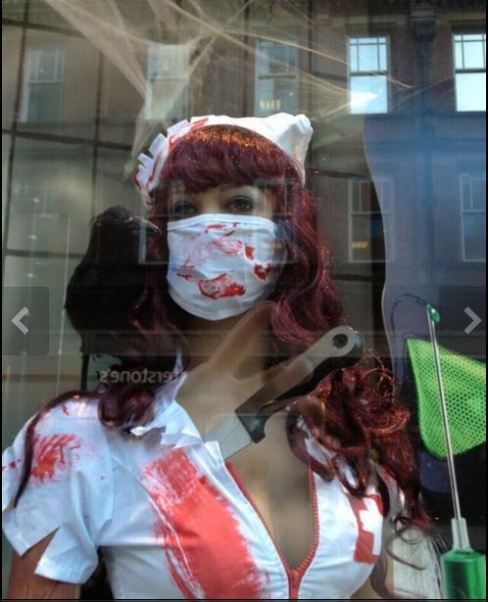In memory of Kirsty Treloar
New Year’s Day 2019 and before dawn on the first morning of the New Year a woman in her early thirties, whose name has not yet been made public, was stabbed to death in Camberwell, South London. She will be the 1,000th woman killed by a man whose name I will record on my website Counting Dead Women.
7 years ago today, 20 year-old Kirsty Treloar received a text from Miles Williams, the 19 year-old father of her not-yet 4-week old baby. The text read
“Okay wer all gud now and my new yrs ressy is that i aint going to hit u again and i won’t hit u 4 this yr next yr the yr after that the next yr after that.”
And went on to say “But I wont u to swear on (their daughter’s) life u wont p.ss me off and do things to make me angry love you 4 eva.’
Kirsty was terrified of Miles and had been trying to extricate herself from their relationship; she told him that she didn’t want to see him. She’d spent Christmas at her family home in Hackney. The next day, Kirsty paid the price of lack of compliance. Williams broke in to the house and dragged her in to a car, stabbing and wounding her sister and brother who were trying to protect her. She was later found dead, dumped beside bins some two miles away. She had been stabbed 29 times.
A few weeks before, Kirsty had been referred to nia, the charity where I work, which supports women and girls subjected to men’s violence. I was told of Kirsty’s death and looked on the internet to see if I could find out what had happened. But Kirsty wasn’t the only woman killed by a man at the start of the year, there were multiple reports of fatalities of women and so I made a note of their names because I wanted to know how many there were. It turned out that in the first three days of 2012, eight women in the UK had been killed by men : three shot, one stabbed, one strangled with a dog lead, strangled, one – a 77 year-old woman – beaten to death with her own walking stick, and an 87 year old woman battered to death with blunt force trauma by her own grandson.
Seven years and 1000 women later, I haven’t stopped recording the names of women killed by men. In reality, the number is even higher, every year there are a number of unsolved cases where women have been killed and statistically almost all of them will have been committed by men. There are cases where men appear to have played a direct role in the death of a woman but they manage to evade prosecution. I suspect there are women whose disappearance has gone unreported, or whose absence has gone unacknowledged and whose body will never be found. There are women who die of secondary causes related to long histories of abuse by men and there are women who kill themselves because that is the only route they can see to end the pain of violence and abuse.
I continued because I cannot bring myself to say that the next woman killed isn’t important. I continue because a focus on intimate partner homicides at the exclusion of other killings disguises and diminishes the true rate of men’s fatal violence against women. I continue because the killing of women by their current and former partners is so normalised that it is not recognised as a national emergency. I continue because the need for and benefits of specialist single-sex services for women victim-survivors of men’s violence are still subjected to challenge and given insufficient regard. I continue because I want someone to bear witness and commemorate our sisters. I continue because the slaying of women by men, although it has happened at least 1,000 times in seven years, continues to be described by the police and reported in the media as an ‘isolated incident.’ I continue because I believe the more we look, the more we can learn and the more effectively we can take steps to reduce men’s violence against women. I continue because I believe a different world is possible, but it is only by consciously committing to making changes that look at the multitude of factors that support and enable men’s violence against women, that will give us a hope in hell of getting there.



